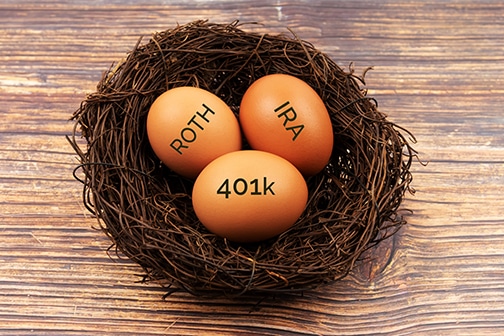The Roth IRA is a very powerful retirement savings vehicle. Not only does the account grow tax-free, but ultimately the distributions are also tax-free. The lack of the upfront tax deduction that’s available with a traditional IRA is definitely a downside, but it’s more than made up for down the road when the account distribution finally takes place.
With the stock market currently down significantly from the recent past, this makes this Roth IRA conversion option an even more attractive and less expensive option to evaluate. You don’t need to convert your entire Traditional IRA because it’s not an all-or-nothing proposition either. Instead, converting part of your IRA to a Roth IRA, especially in years when your income may be down, is a strategy worth exploring.
A Roth IRA has several advantages over a traditional IRA. Most important among the benefits is that qualifying distributions from a Roth IRA are not subject to federal or state income tax. This difference could therefore have an impact on the taxation of other sources of income such as social security or capital gains. The amount of social security benefits that are taxable is determined by the taxable income of the taxpayer, while the tax rate applied to capital gains is also determined by the taxable income. Additionally, since distributions from a Roth IRA are not taxable, they will not push a taxpayer’s income up into the next tax bracket.
Conversion to a Roth IRA will ensure that the taxpayer will have paid all taxes on these funds, including any growth in profits that may occur. The resulting and continuing balance of the Roth IRA provides flexibility that can be used during retirement as there will be no tax consequences associated with a distribution from these accounts. A distribution from a Roth IRA does not affect the taxation of other sources of income.
Another important benefit is that, unlike a traditional IRA, there are no required minimum distributions (RMDs) that start at age 72 from a Roth IRA. Some taxpayers who do not need to receive a distribution from their traditional IRA to cover living expenses would prefer to leave the money in their IRA where it would accumulate additional income, but are required to take the RMD. Often, this RMD is sufficient to move the taxpayer into the next higher tax bracket.
A third benefit of converting to a Roth IRA is that if you die, your heirs will inherit any remaining funds inside the Roth IRA tax-free, as long as the Roth IRA has been open for at least 5 years. An inheritance from a traditional IRA, on the other hand, would be subject to regular federal and state income taxes for the beneficiary when making distributions.
Over the years I’ve had several clients who I advised to convert some or all of their traditional IRA to a Roth IRA when they were younger and who chose not to take my advice because they didn’t could not bear the large one-time tax bill that occurs as a result of the conversion. Several years later, when they turned 72 and were forced to start making distributions from that tax-deferred investment, they regretted not taking my advice. Additionally, the required minimum distribution amount continues to grow as the traditional IRA account holder ages.
A Roth IRA conversion may not be for all taxpayers, and it is indeed a big tax liability to swallow in the year a conversion may take place. However, careful tax and retirement planning can prove that paying tax now on a smaller account balance at a lower tax rate can offer significant long-term savings compared to waiting to pay taxes on traditional IRA distributions at a later date. The window to take advantage of this opportunity may be closing, you may want to act now.
Paul Pahoresky is a partner in the accounting firm of CPA JLP. He can be reached at 440-970-1040 ext. 14 or at [email protected]. Consult your tax advisor for your particular situation for additional information and advice on these matters.
